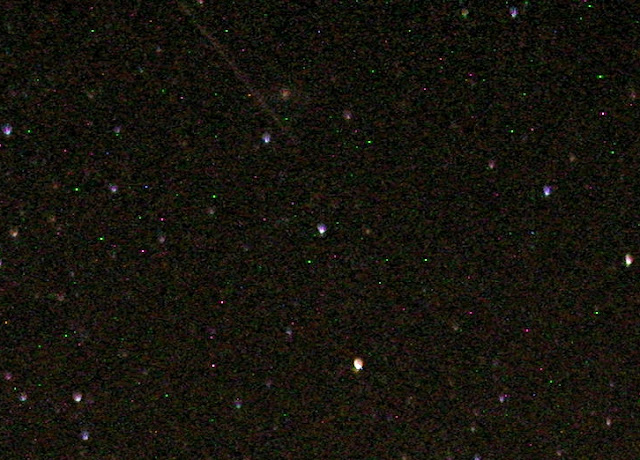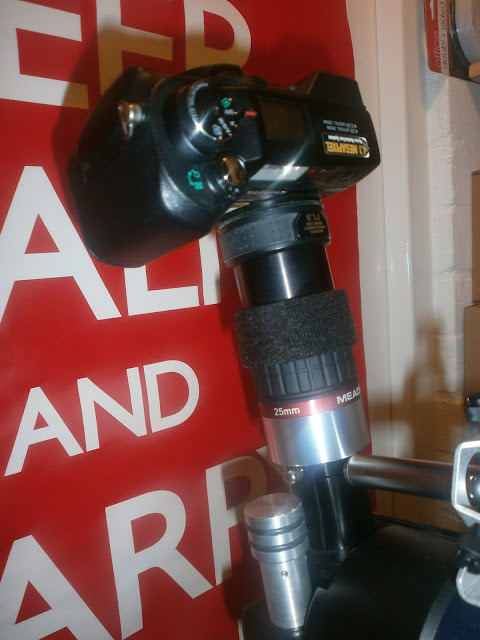The annual Perseids meteor shower peaked last Monday night/Tuesday morning and, unlike previous years, we were fortunate enough to not only have reasonably dark moonless skies but also, unusually for Britain, clear skies. So conditions were ideal for not only observing meteors but also photographing them. Like my first attempt last year, my set-up consisted of two Olympus Camedia C-4040Z cameras pointed on either side of the constellation Perseus - one pointing east towards the Andromeda constellation and the other pointed north towards Cassiopeia.
The two cameras took together took over 400 16-second exposure time-lapse pictures and I was able to capture the descent of at least three meteors - including the rare one below of a meteor cutting across the Andromeda Galaxy. That faint line at the top is the trail left by the meteor, while the fuzzy red patch above it is the nucleus of M31, the Andromeda Galaxy.
.

Below is the wide-angle shot of the meteor - the meteor just comes into camera-shot at the top. You can also see the line of bright stars that make up the Andromeda constellation. The meteor is just above Beta Andromedae (traditionally known as Mirach)
Below is a picture of a second meteor I'd captured later at the western edge of the Andromeda constellation. The bright star at the right of the picture is Gamma Andromedae (Almach).
In the wide-angle shot below, the meteor just enters camera-shot at the right-hand edge of the photograph.
The final meteor I captured was on the second camera aimed at Cassiopeia.You can see it streaking across the sky near the top left-hand corner of the picture below. At the bottom of the picture is the distinctive 'W' shape of the Cassiopeia constellation.
There were, of course, also the usual dotted line streaks that were left by aircraft, such as in the picture below.
In the picture below, the red and white navigation lights of another aircraft are even more obvious.
My photo session started at 11.45 pm and ended at 2.30 am. By that time, the Andromeda Galaxy had just moved out of camera-shot and the beautiful Pleiades are just coming into view at the bottom of the picture below.
And, finally, a short video treat for you. Below is a video file consisting of the 200 time-lapse shots I took looking east, where you can see the Anrdomeda constellation slowly rising during my two and a half hour session that night, with the Pleiades making abrief appearance right at the end.
All photographs and video on this page © Sabri Zain 2013.



































